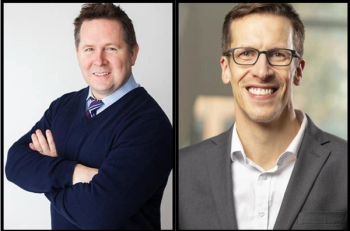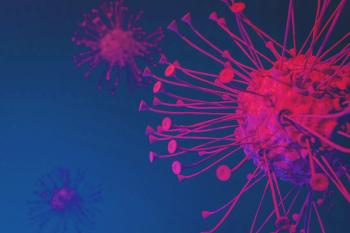
Oncology NEWS International
- Oncology NEWS International Vol 17 No 8
- Volume 17
- Issue 8
FDA cracks down on counterfeit cancer cure products
There are a plethora of websites that hawk miracle cancer cures, luring consumers in with seductive testimonials of instant good health. To the average person, these sites are dubious at best. But for some cancer patients, the promise of an easy panacea veers on dangerous.
ABSTRACT: FDA recently fired off 23 warning letters to US and international companies that promote what FDA calls “fake cancer ‘cure’ products.”
There are a plethora of websites that hawk miracle cancer cures, luring consumers in with seductive testimonials of instant good health. To the average person, these sites are dubious at best. But for some cancer patients, the promise of an easy panacea veers on dangerous.
“I have had desperate patients preyed upon by opportunists offering-at steep prices-‘alternative’ medical treatment,” said Andrew D. Seidman, MD, of Memorial Sloan-Kettering Cancer Center (M SKCC). “A breast cancer patient of mine recently sought care from local Mayan Indians in Costa Rica. The native practitioner massaged her breast tumor in order to shrink it. Naturally, it didn’t work, and it resulted in a significant delay in her getting appropriate care.”
The National Center for Complementary and Alternative Medicine (NCCAM) estimated that more than 62% of US adults spent between $36 and $47 billion in 1 year (1997) on complementary
and alternative medicine (CAM) therapies (Vital and Health Statistics no. 343, 2004).
But do these entities legitimately represent CAM? Not according to the US Food and Drug Administration (FDA), which recently fired off 23 warning letters to US and international companies that promote what FDA calls “fake cancer ‘cure’ products,” including tea for bladder cancer, black salve for skin cancer, and fungi for shrinking malignant tumors.
David Elder, director of FDA’s Office of Enforcement, went so far as to characterize this type of healthcare fraud as a cruel form of greed.
ONI spoke with experts in the CAM community about this FDA crackdown and found that reactions were mixed. On the one hand, they applauded regulation that unmasks cancer-cure charlatans. On the other, there are concerns that the line between evidence-based CAM and money-making chicanery is being muddled.
Meanwhile, clinicians must figure out how to manage patients who are likely to explore unconventional treatment.
Integrative medicine
CAM serves as a convenient umbrella term for medicine that falls outside the mainstream. But the term unwittingly empowers Internet health scams.
“The language in this area has always been part of the problem. CAM is a nice clean acronym, but it does a huge disservice,” commented Barrie Cassileth, PhD, chief of the Integrative Medicine Service at Memorial Sloan-Kettering and president of the International Society for Integrative Oncology.
Dr. Cassileth said that the term alternative medicine indicates nonviable therapies that can have serious consequences when interacting with standard cancer regimens. Alternative medicine should be distinguished from evidence-based complementary care, which she and others in the field refer to as integrative medicine.
Unfortunately, patients desperate for the miracle cure may not stop to understand that distinction, leading them straight to the purveyors of suspect pills and potions.
“The absence of data to confirm or refute these products is of concern,” commented Derek Raghavan, MD, PhD, director of the Taussig Cancer Center, Cleveland Clinic Foundation. “Since the majority of patients with advanced cancer will probably be using some form of alternative or supplementary medicine, I believe these products should be properly regulated, especially as some of them have the potential to be quite dangerous.”
UK-based CAM expert Edzard Ernst, MD, PhD, said he was impressed by the FDA crackdown.
“Here in the UK, we do not have comparable activities,” said Dr. Ernst, Laing Chair in Complementary Medicine at Peninsular Medical School in Devon.
“We’ve shown repeatedly how badly cancer patients can be misled by these websites,” he said. “Our Department of Health, however, does not seem to find this worrying. On the contrary, it even sponsored an overtly promotional guide on alternative medicines, many of which are unproven or potentially dangerous.”
But do the FDA’s warning letters constitute regulation or simple repression? Many in the alternative medicine field point out that the politics of medicine, and the financial interests of big pharma, may prevent promising, unconventional cancer therapies from being properly tested and implemented.
Saving patients from snake oil
“There’s plenty of hokum out there in the alternative community,” said Kenny Ausubel, author of When Healing Becomes a Crime. “But there’s also a dearth of reliable data backing up the efficacy of much of what’s being used in mainstream cancer care. We’re dealing with a double standard when it comes to testing alternative treatments. We need an open mind and evidence-based research in determining the effectiveness of any therapy, complementary, alternative, or traditional.”
A survey of CAM use among women aged 18 to 80, conducted by researchers at Columbia-Presbyterian Medical Center, found that about 15% used complementary approaches in addition to their conventional treatment (Am J Public Health 96:1236-1242, 2006).
“Interestingly, about 74% of those women indicated that they told their physicians they were using CAM approaches [J Womens Health 17:829-840, 2008],” said lead investigator Fredi Kronenberg, PhD, a professor at Columbia University. “Of course, in most cases, physicians know very little about whether or how herbal products or other dietary supplements might interact with the drugs they’re prescribing.”
Physicians should also be aware that patients are more likely to seek out alternatives therapies if they feel that conventional medicine has failed them.
“Cancer patients are vulnerable; they want to regain some control of their lives. That’s one reason they seek out this kind of activity, which can include some strange and dangerous treatments,” said David H. Henry, MD, vice chair, Department of Medicine, Pennsylvania Hospital, Philadelphia.
Dr. Henry said his oncology group tries to educate their patients about the realities of alternative care, although “personally, I don’t think many of my patients get caught up in these treatments,” he said.
Dr. Kronenberg stressed that since the concomitant use of alternative products with pharmaceutical drugs will likely increase, physicians need to become conversant with the variety of CAM herbs and treatments their cancer patients are using.
“Even if doctors don’t understand the CAM therapy, they should at least document what their patients are using, including specific brands,” she said, “and keep their eyes open for research as it emerges.”
Articles in this issue
over 17 years ago
An editor says farewellover 17 years ago
High cost of biologics takes a toll on hem/onc practicesover 17 years ago
FDA mandates changes to ESA labeling infoover 17 years ago
Poll results: Medical education falters on pain reliefover 17 years ago
Certification offered to rad oncs for care of dying patientsover 17 years ago
VA enlists ACR for RT accreditations; H&N date changeover 17 years ago
Erbitux gains expanded approval in Europeover 17 years ago
Docs deserve pay for cognitive skill setover 17 years ago
Creator of Herceptin goes Hollywood in TV biopicover 17 years ago
Avastin/sunitnib RCC trial closes after serious toxicitiesNewsletter
Stay up to date on recent advances in the multidisciplinary approach to cancer.
































































































